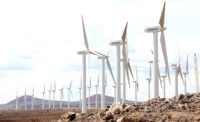The three East African countries planning to use a stalled $360-million, 90-MW hydroelectric powerplant project have agreed to contribute funding, allowing the start of construction to be set for 2013.
Under the agreement, Tanzania, Rwanda and Burundi collectively will contribute $10 million to the project, which is now expected to be commissioned by 2017. The project is significant because it will enable the three countries to begin integrating their electricity transmission and distribution systems.
Leading the project is the Nile Equatorial Lakes Subsidiary Action Program, or NELSAP, which is a subsidiary of the Nile Basin Initiative, an intergovernmental organization focused on developing projects for the purpose of sharing water resources from the Nile River basin. In addition to the three countries involved, the World Bank and the African Development Bank, along with other financiers, are funding the project. Each country’s public utility has agreed to purchase electricity from the plant.
The project’s power station will be constructed on the border of Tanzania and Rwanda, near Rusumo Falls, located on the Kagera River. It will feature three Kaplan turbines and three 20.2-MW generators with 12-kV output voltage.
Feeding the plant will be a 472-cu-meter, 13.5-m-high reservoir located at Lake Rweru, which lies in both Burundi and Rwanda. The concrete-gated reservoir and spillway will be topped by a two-lane road and cover approximately 111 sq kilometers.
Upstream of the falls in Rwanda, a 17-m-wide, 260-m-long diversion canal will be built to feed the reservoir. The reservoir will also include an 8-m-wide, 460-m-long reinforced-concrete headrace tunnel, which will take large debris from the river to a settling pond. A 40-m-wide tailrace canal will lead the water back into the river from the turbine.
Three transmission lines totaling 368 km will link the three countries’ national grids to the hydropower station, according to a plan approved in February by the three countries’ energy ministers.
A statement from the World Bank reads, “These transmission lines are expected to play a role in the creation of a regional grid backbone for power trade within the region.”
The project is currently out for bid. NELSAP expects to award a contract later this year.
Currently, Tanzania, Rwanda and Burundi collectively generate an estimated 4,197 gigawatts of electricity per year; the countries expect their total power demand to nearly triple by 2020.


Post a comment to this article
Report Abusive Comment